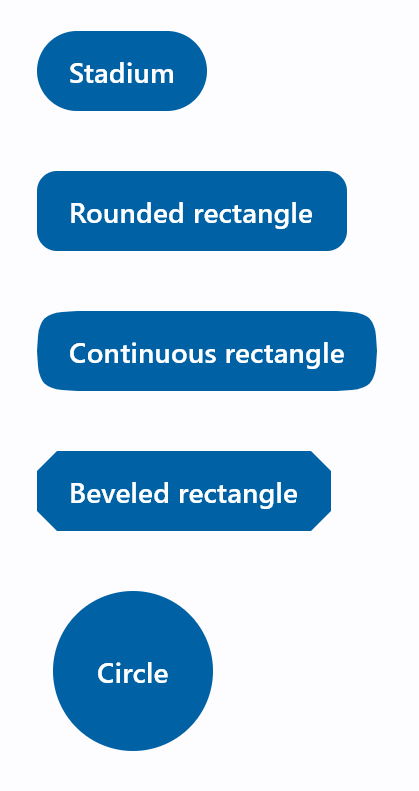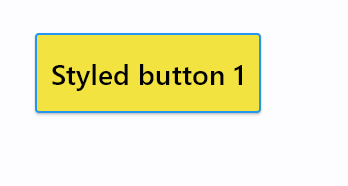ButtonStyle
Allows controlling all visual aspects of a button, such as shape, foreground, background and shadow colors, content padding, border width and radius.
Each individual style attribute could be configured for all or
particular ControlState of a button, such as HOVERED, FOCUSED, DISABLED
and others.
ButtonStyle class has the following properties:
color
The color for the button's Text and Icon control descendants.
bgcolor
The button's background fill color.
overlay_color
The highlight color that's typically used to indicate that the button is focused, hovered, or pressed.
shadow_color
The shadow color of the button's Material.
surface_tint_color
The surface tint color of the button's Material.
elevation
The elevation of the button's Material.
animation_duration
Defines the duration in milliseconds of animated changes for shape and elevation.
padding
The padding between the button's boundary and its child.
side
An instance of BorderSide class, the color and weight of the button's outline.
shape
The shape of the button's underlying Material. The value is an instance of OutlinedBorder class.
Usage example
You can configure a different shape, background color for a hovered state and configure fallback values for all other states.
To configure style attribute for all Material states set its value to a literal (or class instance). For example, if you set color property to a literal the value will be applied to all button states:
ButtonStyle(
color=ft.colors.WHITE
)
To configure style attribute for specific Material states set its value to a dictionary where the key is state name. For example, to configure different background colors for HOVERED and FOCUSED states and another colors for all other states:
ButtonStyle(
color={
ft.ControlState.HOVERED: ft.colors.WHITE,
ft.ControlState.FOCUSED: ft.colors.BLUE,
ft.ControlState.DEFAULT: ft.colors.BLACK,
}
)
Various button shapes example

import flet as ft
def main(page: ft.Page):
page.padding = 30
page.spacing = 30
page.add(
ft.FilledButton(
"Stadium",
style=ft.ButtonStyle(
shape=ft.StadiumBorder(),
),
),
ft.FilledButton(
"Rounded rectangle",
style=ft.ButtonStyle(
shape=ft.RoundedRectangleBorder(radius=10),
),
),
ft.FilledButton(
"Continuous rectangle",
style=ft.ButtonStyle(
shape=ft.ContinuousRectangleBorder(radius=30),
),
),
ft.FilledButton(
"Beveled rectangle",
style=ft.ButtonStyle(
shape=ft.BeveledRectangleBorder(radius=10),
),
),
ft.FilledButton(
"Circle",
style=ft.ButtonStyle(shape=ft.CircleBorder(), padding=30),
),
)
ft.app(target=main)
Styled button example
Check the following example:

import flet as ft
def main(page: ft.Page):
page.add(
ft.ElevatedButton(
"Styled button 1",
style=ft.ButtonStyle(
color={
ft.ControlState.HOVERED: ft.colors.WHITE,
ft.ControlState.FOCUSED: ft.colors.BLUE,
ft.ControlState.DEFAULT: ft.colors.BLACK,
},
bgcolor={ft.ControlState.FOCUSED: ft.colors.PINK_200, "": ft.colors.YELLOW},
padding={ft.ControlState.HOVERED: 20},
overlay_color=ft.colors.TRANSPARENT,
elevation={"pressed": 0, "": 1},
animation_duration=500,
side={
ft.ControlState.DEFAULT: ft.BorderSide(1, ft.colors.BLUE),
ft.ControlState.HOVERED: ft.BorderSide(2, ft.colors.BLUE),
},
shape={
ft.ControlState.HOVERED: ft.RoundedRectangleBorder(radius=20),
ft.ControlState.DEFAULT: ft.RoundedRectangleBorder(radius=2),
},
),
)
)
ft.app(target=main)